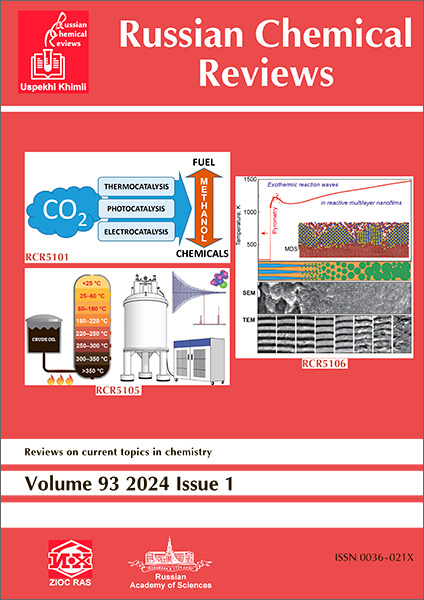Modern bio and chemical sensors and neuromorphic devices based on organic semiconductors
IF 6
2区 化学
Q1 CHEMISTRY, MULTIDISCIPLINARY
引用次数: 10
Abstract
This review summarizes and highlights the current state-of-the-art of research on chemical sensors and biosensors in liquid environment and neuromorphic devices based on electrolyte-gated organic transistors with the active semiconductor layer of organic π-conjugated materials (small molecules, oligomers and polymers). The architecture and principles of operation of electrolyte-gated organic transistors and the main advantages and drawbacks of these devices are considered in detail. The criteria for the selection of organic semiconductors for these devices are presented. The causes of degradation of semiconductor layers and ways of their elimination are discussed. Examples of the use of electrolyte-gated organic transistors as bio and chemical sensors, artificial synapses and computing devices are given. The bibliography includes 132 references.基于有机半导体的现代生物和化学传感器及神经形态器件
这篇综述总结并强调了液体环境中的化学传感器和生物传感器以及基于具有有机π共轭材料(小分子、低聚物和聚合物)有源半导体层的电解质门控有机晶体管的神经形态器件的最新研究进展。详细考虑了电解质门控有机晶体管的结构和工作原理以及这些器件的主要优点和缺点。介绍了用于这些器件的有机半导体的选择标准。讨论了半导体层退化的原因及消除方法。给出了电解质门控有机晶体管用作生物和化学传感器、人工突触和计算设备的例子。参考书目包括132篇参考文献。
本文章由计算机程序翻译,如有差异,请以英文原文为准。
求助全文
约1分钟内获得全文
求助全文
来源期刊

Russian Chemical Reviews
化学-化学综合
CiteScore
13.00
自引率
5.20%
发文量
27
审稿时长
6-12 weeks
期刊介绍:
Russian Chemical Reviews serves as a complete translation of the esteemed monthly review journal Uspekhi Khimii, which has been a prominent figure in Russian scientific journals since its establishment in 1932. It offers comprehensive access to the advancements made by chemists from Russia and other former Soviet Union countries.
Established in 1932, Russian Chemical Reviews is committed to publishing timely and significant review articles encompassing various facets of modern chemistry, including chemical physics, physical chemistry, computational and theoretical chemistry, catalysis, coordination chemistry, analytical chemistry, organic, organometallic, and organoelement chemistry, chemistry of macromolecules, applied chemistry, biochemistry, bio-organic chemistry, biomolecular chemistry, medicinal chemistry, materials chemistry, nanochemistry, nanostructures, and environmental chemistry.
 求助内容:
求助内容: 应助结果提醒方式:
应助结果提醒方式:


